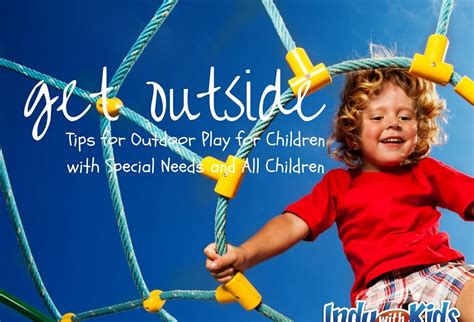Adventure travel with kids can be an incredibly rewarding experience, but it also comes with unique challenges that require careful planning and safety considerations. From selecting kid-friendly destinations to ensuring food and water safety, parents must be well-prepared to handle the unpredictable nature of such trips. This ultimate guide provides essential tips to help you plan and execute a safe and enjoyable adventure with your children. Whether you’re hiking, exploring new waters, or navigating transportation, these safety guidelines will help you protect your little ones while creating lasting memories. Embark on your next family adventure with confidence and peace of mind!
domgiz.com will explore this topic comprehensively.
1. Choosing Kid-Friendly Adventure Destinations
When planning an adventure trip with kids, selecting a destination that is both exciting and age-appropriate is crucial. Start by considering places that offer a blend of adventure and safety. National parks, for example, are ideal as they provide structured environments with plenty of outdoor activities like hiking and wildlife viewing, all within a controlled setting. Coastal areas with calm beaches can also be great for families, offering water-based fun without the risks of rough seas.
Research is key—look for destinations known for being family-friendly, with amenities like child-focused tours, educational programs, and safe environments. Also, consider the accessibility of medical facilities and emergency services, as well as the general safety of the area.
Another important factor is the interest and energy levels of your children. Younger kids may enjoy short, simple activities like nature walks, while older ones might be eager for more challenging adventures such as zip-lining or kayaking. Choose destinations that cater to your children’s capabilities, ensuring they remain engaged and safe throughout the trip. By thoughtfully selecting the right destination, you set the stage for a memorable and secure family adventure.

2. Pre-Travel Health and Safety Preparations
Before embarking on an adventure trip with kids, thorough health and safety preparations are essential. Begin by scheduling a pre-travel checkup with your pediatrician to ensure your children are healthy and fit for travel. Discuss any potential health risks associated with your destination, such as altitude sickness or local diseases, and consider necessary vaccinations.
Pack a well-stocked first aid kit tailored to your trip, including items like bandages, antiseptic wipes, insect repellent, sunscreen, and any prescription medications your children may need. It’s also wise to carry a copy of your child’s medical records and emergency contact information.
Prepare for the unexpected by researching the location of nearby medical facilities at your destination. Teach your kids basic safety practices, such as staying hydrated, applying sunscreen, and recognizing local wildlife hazards. Additionally, ensure your travel insurance covers any medical emergencies that may arise during your adventure. Proper preparation will keep your family safe and ready for any challenges.

3. Essential Packing List for Kids
Packing for an adventure trip with kids requires careful consideration to ensure you have everything needed for a safe and enjoyable experience. Start with clothing that suits the destination’s climate—layered outfits for cooler environments and lightweight, breathable clothes for warmer regions. Don’t forget essentials like hats, sunglasses, and sturdy shoes for outdoor activities.
Include a selection of snacks that are easy to carry and non-perishable, ensuring your kids stay energized throughout the day. Hydration is crucial, so pack refillable water bottles for each child. Also, consider bringing a child-friendly hydration system for long hikes.
Safety items are a must. Pack a whistle and small flashlight for each child, and teach them how to use these in case they get separated. Include insect repellent, sunscreen, and after-bite treatment to protect against bugs and sun exposure. Additionally, bring any necessary medications and a detailed first aid kit.
For comfort and entertainment, pack a favorite toy, book, or travel game to keep your kids occupied during downtime. Lastly, ensure you have important documents like passports, medical records, and travel insurance information readily accessible. A well-prepared packing list ensures a smoother, safer adventure for the whol

4. Tips for Safe Hiking and Outdoor Activities
When hiking or engaging in outdoor activities with kids, safety should always be a priority. Start by choosing trails that match your children’s abilities—opt for shorter, well-marked paths with gentle terrain. Always check weather conditions before heading out, and plan your hike for the cooler parts of the day to avoid heat-related issues.
Equip your children with proper footwear, hats, and sun-protective clothing. Make sure they carry a small backpack with essentials like water, snacks, and a whistle. Teach your kids to stay on marked trails and within sight at all times. Establish a buddy system and agree on what to do if someone gets separated.
Regular breaks are important to keep everyone hydrated and energized. Encourage your children to observe their surroundings, teaching them to appreciate nature while being cautious of wildlife and plants. By following these tips, you can ensure a fun and safe outdoor adventure for the entire family.
5. Water Safety for Kids on Adventure Trips
Water activities can be a highlight of any adventure trip, but they also come with inherent risks, especially for kids. To ensure safety, always choose swimming spots that are suitable for children, such as calm lakes, shallow beaches, or supervised pools. If you’re venturing into rivers or the ocean, be aware of currents and tides, and never allow your kids to swim unsupervised.
Equip your children with life jackets approved by safety standards, especially when boating, kayaking, or engaging in any activity near deep water. Even confident swimmers should wear them in unpredictable waters. Teach your kids basic water safety rules, like never swimming alone, staying within designated areas, and recognizing warning signs such as changes in water color or temperature.
Consider enrolling your children in swimming lessons before the trip if they aren’t strong swimmers. Additionally, make sure to pack plenty of sunscreen and reapply it frequently, as water can amplify sun exposure. Keep a close eye on your kids at all times during water activities, and be prepared to intervene if needed. With these precautions, your family can safely enjoy all the water-based fun your adventure has to offer.
6. Managing Food and Drink Safety
Managing food and drink safety is vital when traveling with kids, especially in unfamiliar environments. Start by researching the local water quality at your destination. In areas where tap water isn’t safe to drink, always use bottled or purified water for drinking, brushing teeth, and washing fruits and vegetables. Pack a portable water filter or purification tablets as a backup, especially for remote locations.
When it comes to food, stick to well-cooked meals served hot to avoid the risk of foodborne illnesses. Be cautious with street food and unfamiliar dishes—opt for restaurants with good hygiene practices and high customer ratings. For snacks on the go, bring non-perishable items like granola bars, dried fruits, and crackers to ensure your kids always have something safe to eat.
If your child has food allergies, be extra vigilant. Learn the local names for allergens and how to communicate dietary restrictions in the local language. Consider carrying allergy cards that clearly list the allergens in the native language to show at restaurants.
Finally, practice good hand hygiene by using hand sanitizer regularly, especially before meals. Encourage your kids to do the same. By carefully managing food and drink safety, you can help protect your family from common travel-related illnesses, ensuring a healthier, more enjoyable adventure.
7. First Aid Tips for Adventure Travel
Having a well-stocked first aid kit and knowing basic first aid practices are essential for any adventure travel with kids. Start by including essential items in your kit, such as adhesive bandages, antiseptic wipes, antibiotic ointment, gauze pads, and medical tape. Add specialized items like insect bite treatment, burn cream, and any necessary prescription medications.
Before your trip, familiarize yourself with basic first aid procedures, including how to treat cuts, scrapes, and minor burns. Learn how to recognize and respond to signs of allergic reactions, such as swelling or difficulty breathing, and carry an epinephrine auto-injector if prescribed. If you’re hiking or engaging in outdoor activities, know how to manage common issues like blisters or sprains.
Instruct your children on basic safety and self-care, such as how to use a first aid kit and what to do if they get injured. Carry a small first aid manual or app for quick reference. Being prepared and knowledgeable ensures that you can handle minor emergencies efficiently and keep your adventure on track.
8. Navigating Transportation Safely with Kids
Navigating transportation safely with kids is crucial for a smooth and secure adventure trip. Whether traveling by car, plane, or other means, ensure your children’s safety with the right equipment and precautions. In cars, use appropriate car seats or boosters based on your child’s age, weight, and height, and always buckle up. Plan for frequent stops on long drives to let kids stretch and stay comfortable.
When flying, prepare for the journey by packing snacks, entertainment, and comfort items like a favorite blanket or toy. Explain the airport and flight procedures to your kids to reduce anxiety and keep them calm. Follow airline guidelines for child safety and consider bringing a portable travel seat if necessary.
For other forms of transportation, such as trains or buses, make sure your children are aware of basic safety rules, like staying seated and holding onto handrails. Keep a close eye on them, especially in crowded or unfamiliar settings. By planning ahead and prioritizing safety, you can ensure a smoother and more enjoyable travel experience for the whole family.
9. Strategies for Keeping Kids Entertained and Safe
Keeping kids entertained and safe during adventure travel requires thoughtful planning and creativity. Start by bringing along a variety of activities that cater to different interests and age levels. Pack a selection of travel-friendly games, coloring books, and educational apps to keep children engaged during downtime. Consider using electronic devices for longer trips, but balance screen time with interactive and physical activities.
Incorporate games and challenges that involve exploration and learning, such as scavenger hunts or nature-based activities. Create a travel journal for older kids where they can document their experiences and observations, fostering a sense of adventure and involvement.
Establish safety routines to ensure your kids remain secure while having fun. Use brightly colored or easily recognizable clothing so you can spot them quickly in crowds. Set clear rules about staying close and how to get help if they become lost. Teach them basic safety information, like how to use a whistle or identify safe places to go in an emergency.
Plan for regular breaks to prevent overstimulation and ensure everyone stays refreshed. Allow kids to help with planning some aspects of the trip, giving them a sense of ownership and excitement. By combining entertainment with safety strategies, you create a positive and secure travel experience for your children.
Planning an adventure trip with kids can be a rewarding experience when approached with careful preparation and attention to safety. By choosing kid-friendly destinations, packing essential items, and following safety tips for outdoor activities and water adventures, you can create a fun and secure environment for your family. Managing food and drink safety, handling first aid situations, and navigating transportation with caution further ensure a smooth journey. Engaging your children with creative activities and establishing clear safety rules will keep them entertained and protected. With these strategies in place, your family adventure will be both enjoyable
domgiz.com

